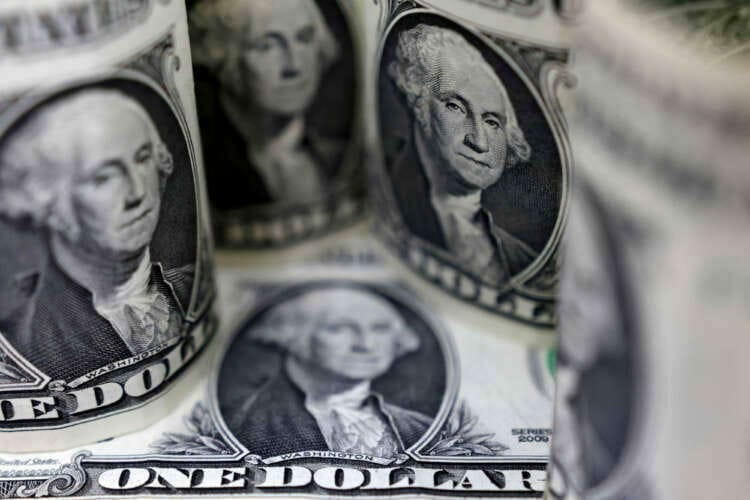
By Karen Brettell
NEW YORK (Reuters) – The dollar fell on Tuesday, giving up earlier gains, after data showed U.S. labor costs increased less than expected in the fourth quarter, and before the Federal Reserve is expected to hike rates by 25 basis points on Wednesday.
The Employment Cost Index, the broadest measure of labor costs, rose 1.0% last quarter. That was the smallest advance since the fourth quarter of 2021 and followed a 1.2% gain in the July-September period.
Still, it is not seen as likely to sway the U.S. central bank from some further rate hikes.
“Despite the fact that it came in below expectations, objectively speaking it’s still a pretty firm print that means that the Fed is still going to sound hawkish,” said Bipan Rai, North American head of FX strategy at CIBC Capital Markets in Toronto.
Other data on Tuesday also showed that house price growth slowed considerably in November, with a 9.2% increase in the month.
Fed funds futures traders are pricing for the Fed’s benchmark rate to peak at 4.91% in June, up from 4.33% now.
But investors are also bearish on the U.S. economy and see the Fed as having to cut rates back to 4.48% by December. This is despite Fed officials stressing they will need to keep rates in restrictive territory for a period of time in order to bring down inflation.
“(Fed Chair Jerome) Powell and the FOMC will want to flag the fact that we are going to see higher rates for a little bit longer. It’s all about whether or not the market believes that narrative at this point,” said Rai.
The dollar index was last down 0.21% on the day against a basket of currencies at 102.03. It earlier rose to a two-week high of 102.61, which analysts said was likely due in part to repositioning for month-end.
The greenback is also trading just above key technical supports against major currencies including the euro.
The index is on track to post a monthly loss of 1.39% for January, after losing 2.26% in December and 5.07% in November, which was its worst monthly loss since September 2010. The losses in November came on expectations that the Fed would begin slowing rate hikes, which it did in December.
The index has weakened from a 20-year high of 114.78 on Sept. 28.
The euro gained 0.21% on the day to $1.0867, after earlier falling to $1.0802.
Data on Tuesday showed the euro zone eked out growth in the final three months of 2022, managing to avoid a recession even as sky-high energy costs, waning confidence and rising interest rates took a toll on the economy that is likely to persist into this year.
The European Central Bank and Bank of England are both expected to hike rates by 50 basis points on Thursday.
Sterling fell 0.16% against the dollar to $1.2329.
The dollar fell 0.24% against the Japanese yen to 130.12.
(Additional reporting by Harry Robertson in London; Editing by Mark Potter and Mark Heinrich)


